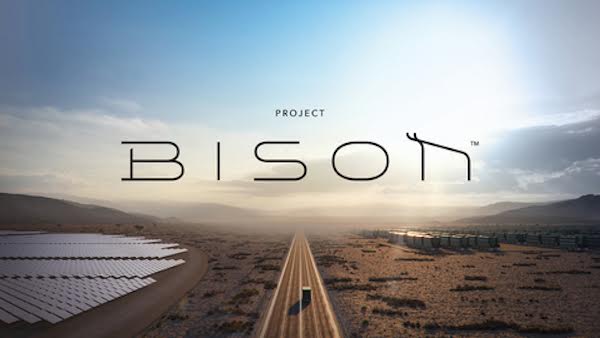Scheduled to be in operation by the end of 2023, the goal of the program, called Project Bison, is to build a new facility capable of drawing down 5 million metric tons of carbon dioxide annually by 2030.
A Los Angeles-based company called CarbonCapture is building the facility, called a direct air capture (DAC) plant, that is expected to start operations as early as next year. If all goes smoothly by 2030, the operation will be orders of magnitude larger than existing direct air capture projects. I’m told once it scales up the site it will capture five million metric tons of CO2 a year, or roughly the equivalent emissions from driving a million gas-powered cars for a year. I should note, some inside the industry are saying that by the middle of the century the world may need to be pulling +10 billion tons of CO2 from the atmosphere each and every year.
Project Bison would be the single largest project that has been announced to date, both domestically and internationally. Right now, there are just 18 DAC plants across the world. Combined, they can only capture around 0.01 million metric tons of CO2 annually. The biggest DAC and carbon storage facility yet, called Orca, just came online in Iceland in September 2021. And even that facility is relatively small. It can draw down around 4,000 tons of carbon dioxide per year, about as much climate pollution as 790 gas-guzzling passenger vehicles create annually.
CarbonCapture’s equipment is modular, which is what the company says makes the technology easy to scale up. The plant itself will be made of modules that look like stacks of shipping containers with vents that air passes through. At first, the modules used for Project Bison will be made at CarbonCapture’s headquarters in Los Angeles. In the first phase of the project, expected to be completed next year, around 25 modules will be deployed in Wyoming. Those modules will collectively have the capacity to remove about 12,000 tons of CO2 a year from the air.
Inside each of the 40-foot modules are about 16 “reactors” with “sorbent cartridges” that essentially act as filters that attract CO2. The filters capture about 75 percent of the CO2 from the air that passes over them. Within about 30 to 40 minutes, the filters have absorbed all the CO2 they can. Once the filters are fully saturated, the reactor goes offline so that the filters can be heated up to separate out the CO2. There are many reactors within one module, each running at its own pace so that they’re constantly collecting CO2. Together, they generate concentrated streams of CO2 that can then be compressed and sent straight to underground wells for storage.
CarbonCapture is partnering with Dallas-based company Frontier Carbon Solutions to take care of the carbon storage side of things. This could will be the first project in the US to use “Class VI wells” designed specifically for permanent CO2 storage. The geology in Wyoming allows Project Bison to store the captured CO2 on-site near the modules. Project Bison plans to permanently store the CO2 it captures underground. Specifically, project leaders are looking at stowing it 12,000 feet underground in “saline aquifers” — areas of rock that are saturated with salt water.
Interestingly, the fossil fuel industry is a major player in the carbon removal arena in the US. Texas is home to another project that’s been billed as the world’s first large-scale DAC plant, and petroleum company Occidental is one of the developers. The Texas plant is supposed to eventually have the capacity to remove 1 million tons of CO2 from the atmosphere a year. It could come online as early as 2024.
Bottom line, there are clearly going to be huge opportunities in the removal, reduction, and sequestering of carbon. I would have someone on your team dedicated to looking for ways you can be advancing in the space. (Source: The Verge; Forbes.com; Reuters; carboncapture.com)








